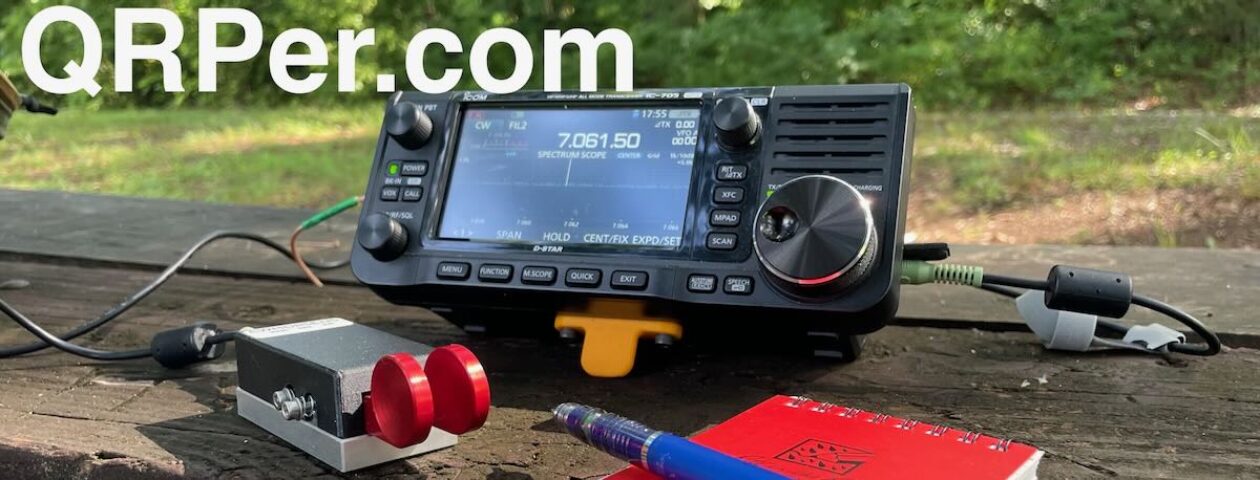Many thanks to Keith (KY4KK) who shares the following message originally sent to his local amateur radio club:
 To anyone curious about how the eclipse might impact the ionosphere and amateur radio communications, this may be of interest.
To anyone curious about how the eclipse might impact the ionosphere and amateur radio communications, this may be of interest.
On Saturday, 4/6/24, I set up 2 WSPR transmitters in my back yard. These will hopefully operate uninterrupted through sometime Tuesday afternoon, 4/9/2024. This should provide good baseline information before and after the solar event.
NASA scientists and other professional and amateur space engineers will consolidate data from amateur operators around the world to help understand how this rare event impacts the various layers of the ionosphere.
During the partial eclipse last year, a similar test revealed that several bands showed significant propagation changes for stations along the path of the event.
Tommy Walker (NG4S) graciously provided the WSPR transmitters and one of the antennas I’m using.
The configurations I’m operating:
- WSPR Lite Classic (20 Meter Band)
- Frequency: 14.097077 MHz (If you tune your HF rig to as close to this frequency as you can get, you MIGHT be able to hear some of the WSPR traffic going on)
- Callsign: KY4KK
- Transmit Power: 20 mW (.02 Watts)
- Antenna: Chelegance MC-750 vertical – adjusted to resonance (no tuner)
- Grid Square: FM04be
- Start time: 00:44 Zulu 4/7/2024
WSPR Lite Classic (40 Meter Band)
- Frequency: 7.040142 MHz (see above)
- Callsign: KY4KK
- Transmit Power: 20 mW (.02 Watts)
- Antenna: Chelegance MC-750 vertical with 40 meter coil – adjusted to resonance (no tuner)
- Grid Square: FM04be
- Start time: 23:10 Zulu 4/6/2024
WSPR is a one-way digital communication protocol using VERY low power (less than .2 Watt or 200 mW). I usually set the transmitters to much lower power than that (.02 Watt or 20 mW) because the weaker signal is more likely to reflect subtle changes in either the antenna or the atmospheric conditions. The sending station transmits a beacon on a specific frequency for each band. The digital package sent by the transmitter contains the callsign of the operator, grid square location and transmitted power in milliwatts. The message is sent slowly and repeated several times. Then, there is a pause and it starts again.
There are amateur receiving stations around the world that are specifically configured to look for WSPR signals. If they can hear me, they record my information and the strength of my signal (how loud it is against the background static – measured in decibels). Their receiver, connected to the internet, then adds information about their station and automatically sends all of it to a central database that is accessible to the public in real time.
Several websites are available to extract the data or view it in map format. All of the ones I use are free and do not require a login. The ones I most frequently use are listed below, but there are others. In general, use my callsign (KY4KK) as the transmitting station, leave the receive station blank and select either 20 or 40 meters.
DXPLORER SB
This site will allow you to pull raw data into a spreadsheet in .csv format if you want to do data analysis.
It also shows the most distant contacts and can display a map
Specifically, I will use this to look at individual stations that recorded me several times during the day. Where was the eclipse during each of the recordings, and did my received signal significantly change?
Also, I will look for differences in how the two bands will be affected.
https://dxplorer.net/wspr/tx/spotsmap.html?callsign=KY4KK&timelimit=1d
WSPR Rocks
I like this site for mapping my contacts.
The interface takes some getting used to, but to start, go to the search button, select the number of spots to show, the time frame (10 minutes if you want to see immediate activity only), band (20m or 40m) and TX Call (KY4KK) and click Search. Then you can click map and it will show all of the contacts the station has made in that time frame.
http://www.wspr.rocks
PSK Reporter
This is another mapping program that may have an easier interface.
As I have mentioned to some of you before, I am continuously amazed at how far WSPR transmissions can go with such low power. There has to be magic involved…
Final Disclaimer: When doing a test like this over several days, a lot of things can go wrong. Batteries die in the middle of the night, a dove crashes into my antenna, the dog runs away with one of my antenna radials (all of these have happened). If I see something has interrupted the transmission, I will try to correct it as soon as possible.
Best Regards,
Keith Wyrick – Amateur HAM Scientist
KY4KK








 Traffic yesterday (en route to Ohio) was pretty heavy. I imagine it’ll be much worse today and even crazier tomorrow.
Traffic yesterday (en route to Ohio) was pretty heavy. I imagine it’ll be much worse today and even crazier tomorrow.




















































